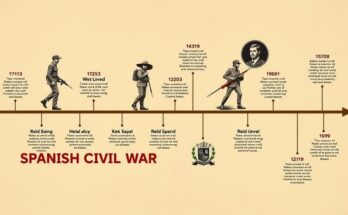The cease-fire between Israel and Hamas approaches a defining moment as Israeli troops plan to withdraw from the Philadelphi Corridor, a key border area with Egypt. This corridor has been central to security concerns, embodying significant tensions between both parties. Negotiations continue with mediators, yet achieving a lasting agreement faces substantial challenges due to divergent demands from both sides.
As the cease-fire between Israel and Hamas nears its conclusion, the focus shifts to the Philadelphi Corridor, a crucial border area separating Gaza and Egypt. Israeli forces are scheduled to withdraw from this sensitive zone, which has been a point of contention in earlier negotiations, raising questions about the implications of this decision on future peace efforts.
The Philadelphi Corridor is an eight-mile strip vital for both security and administration, established under the Egypt-Israel peace accord of 1979. This area became particularly significant after Hamas took control of Gaza in 2007, with Israeli officials accusing Hamas of smuggling arms through this passage to fuel its operations. Prime Minister Benjamin Netanyahu has described this corridor as “Hamas’s oxygen valve,” emphasizing its importance to Israeli security.
This week, as the first phase of the cease-fire concludes, Israeli officials are engaging in discussions with Egyptian and Qatari mediators in Cairo regarding the next steps. Although the deadline for withdrawal from the corridor is approaching, negotiations are still underway for a comprehensive resolution to halt the conflict entirely.
Israel’s planned withdrawal from the Philadelphi Corridor by early March is contingent upon adherence to the cease-fire agreement, which would have critical implications for both parties. If fulfilled, this withdrawal could facilitate further negotiations, enabling both Israel and Hamas to reassess their strategies.
Despite the withdrawal, the prospect of a lasting agreement remains elusive. Israel demands Hamas relinquish control of Gaza and its weapons, conditions that Hamas has thus far dismissed. The anxiety surrounding the truce is heightened by the realities of prior violent exchanges and the need for stability in the region.
The future of the Gaza cease-fire hinges on Israel’s forthcoming actions regarding the Philadelphi Corridor. As Israeli forces prepare to withdraw, the dynamics of this crucial border area may influence subsequent peace negotiations. Both Israel and Hamas seek to avoid renewed hostilities, yet a comprehensive agreement remains distant as differing conditions persist. Continued discussions are essential for achieving long-term stability in the region.
Original Source: www.nytimes.com




